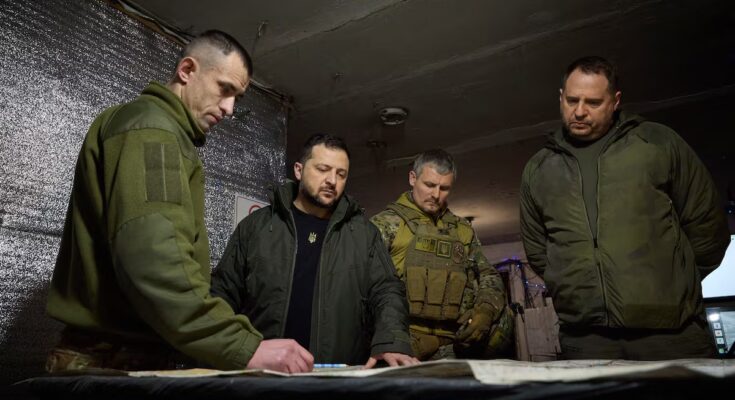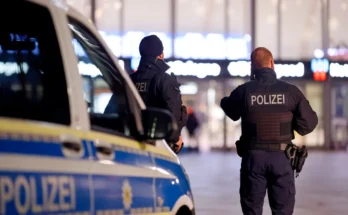Another attempt to put pressure on Ukraine to see if it will finally give in to Moscow, or something more serious? The White House remained officially silent after it came to light that the United States and Russia are working on a 28-point peace plan that forces Kiev to accept harsh conditions to end the war, with the Kremlin appearing to give nothing in return other than a halt to attacks.
After 11 months of tug-of-war, failed negotiations, summits held and meetings cancelled, threats, knocks on the table and public insults, things seem to have returned – or perhaps never left – to the same point they were in January or February: Washington and Moscow align their positions on the war and it is Ukraine, the attacked country, that ends up on the defensive, forced to accept a Pyrrhic armistice with all the makings of defeat. The only difference compared to what was done in February is that now, at least, Zelenskyj is not required to thank publicly even from the Oval Office.
At least this is what can be deduced from what transpires on the alleged peace agreement that the trusted men of Presidents Donald Trump and Vladimir Putin hatched behind the scenes – the American Steve Witkoff and the Russian Kiril Dimitriev respectively – while the two leaders gave the impression of being more at odds than ever after the suspension of the Budapest summit and the imposition of new American sanctions against the Russian oil sector.
The proposal, as appeared in various American media, provides for Ukraine to cede all of Donbas: the province of Luhansk – already almost completely in the hands of Russian forces – but also that of Donetsk, where Ukraine still maintains control of strategic areas. Even the Crimean peninsula, occupied by Moscow since 2014, would remain definitively in Russian hands. Kiev would also have to halve its current army, which would remain completely defenseless against Russia: it would not be allowed to have weapons that would allow it to reach targets deep in the neighboring country, nor could it count on the deployment of an international force on its territory to ensure its security.
So far the White House has neither officially confirmed nor denied the existence of the project. Trump’s deputy chief of staff, Stephen Miller, simply indicated in press statements that peace in Ukraine “is an issue that the president has continued to put at the forefront of our foreign policy: to reach an agreement in the war between Russia and Ukraine, so that we can enjoy peace in Europe and we can stop the death and massacre of so many innocent people.”
The 28-point plan was forged in a similar way to the one developed by the United States for Gaza, which has now become international law after the United Nations General Council officially adopted it with resolution 2803 last Monday. As mediators did then with Hamas, the radical Palestinian group in charge of the Strip, the offer is now being presented to Ukraine with the argument, implicit at best, that it has no alternative.
Instead, it envisages two mechanisms to repair what Putin considers the historical causes of the war: the return of Russian as the official language, a status it already had during the Soviet era and which it would now share with the Ukrainian language; and the recognition of the Russian rite in the practice of the Orthodox Christian religion, the majority in the country.
Since the plan appears to contain nothing more than the usual demands of Russia, which in exchange for the conquered territory and concessions from Ukraine would simply offer to stop the fighting, it is not clear why Kiev should now agree to the same demands that it has rejected time and time again during the three and a half years of war. Washington’s calculation is that the former comedian, admired as a hero in Europe, is weakened by the intense Russian bombings of recent weeks and by the corruption scandals that have seriously tarnished his image at home, so he would have no choice but to accept whatever is put on his table, whether it is a dish of pleasure or not.
It is also unclear whether the 28-point proposal is a formal plan that has the full support of the Administration or whether it is simply a long wish list to be negotiated.
The outlines of the plan were communicated to Ukraine during a meeting two weeks ago in Miami between Witkoff – a man who until January had no experience in the world of international diplomacy – and the current head of the occupied country’s national security council, Ruslan Umerov. But the cotton test will come in the next few days. After arriving in the Ukrainian capital this Wednesday, an American military delegation plans to meet with Ukrainian authorities, in particular President Volodymyr Zelensky, starting on Thursday.
According to American media, this delegation, led by Secretary of the Army Dan Driscoll, will later travel to Moscow to continue contacts. Washington chose to send a Pentagon representative because it believed Russia would take the proposals more seriously if they came from the military.
Kiev and Moscow have not held direct negotiations since last summer. So far, attempts to relaunch the diplomatic channel had stopped after the summit in Alaska on August 15 between Trump and Putin, which ended without very concrete measures.
Trump has never hidden his eagerness to reach some sort of agreement to resolve the war in Ukraine, which during the election campaign he promised to resolve on his first day in office. The fact that fighting continues in the occupied country is the big black mark on what he considers an imposing emblem of a peacemaker of insoluble conflicts – this very Wednesday he announced his involvement in the resolution of the conflict in South Sudan, at the request of the Saudi crown prince, Mohamed Bin Salman.
During a speech at the US-Saudi Arabia investment forum on Wednesday, Trump recalled one of his telephone conversations with Putin, in which the Russian praised him for his role in resolving the conflict between Armenia and Azerbaijan, which dates back to the breakup of the Soviet Union 35 years ago. “I said, ‘don’t worry, let me finish your damn war,’” the American president recalled. “And it will end,” he added.



